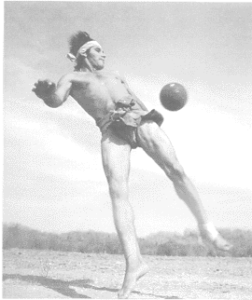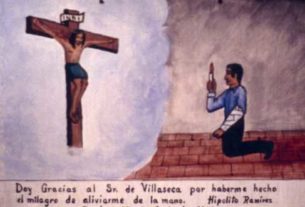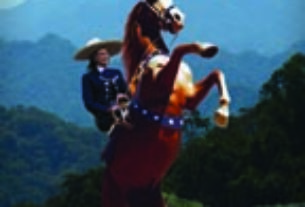Did You Know…?
Baseball is not the oldest ballgame in the Americas
 Forget modern “traditions” like the World Series! Forget soccer, tennis and golf! By far the oldest ballgame in the Americas is the little known game of Ulama! Amazingly, this game is still played in some regions of Mexico, where it is believed to have originated more than 3000 years ago!
Forget modern “traditions” like the World Series! Forget soccer, tennis and golf! By far the oldest ballgame in the Americas is the little known game of Ulama! Amazingly, this game is still played in some regions of Mexico, where it is believed to have originated more than 3000 years ago!
The precise rules of the ancient game are lost in the mists of antiquity, but three distinct forms of Ulama (using the hip, arm and a stick respectively) were played at the Mesoamerican ballgame (Ulama) Festival, held in Mazatlán in April this year. The Festival was organized by the Mazatlán Historic Society, which is pushing for the game to be included in the “Intangible Heritage Category” of UNESCO’s World Heritage denominations, to be awarded in May 2003.
The original ballgame, played by the Aztecs and other Nahuatl speaking peoples in Mexico at the time of the Spanish Conquest, was known as Ullamaliztli, a name deriving from ullama, which means the playing of a game with a ball, and ulli, rubber. Many archaeological sites in Mexico boast the ruins of one or more ballcourts where the game was played and hundreds of representations are known in Pre-Columbian art of ballgame players with their characteristic protective gear, some dating as far back as 1500 B.C. The protective padding was necessary because the solid rubber ball used in the game weighed five to eight pounds (2 – 3 kilos) and was propelled at speeds of up to 60 miles per hour. While most ballgame relics are of single players, one polished clay model found in the state of Nayarit actually depicts a game in progress.
In addition to the many ballcourts in Mexico and the associated objects, which can be seen in museums like the National Anthropology Museum in Mexico City, there is also a good collection of ballgame sculptures at the Snite Museum of the University of Notre Dame in Indiana, U.S.. Named the Reverend Edmund P. Joyce Collection of Ritual Ball Game Sculpture, after an administrator of athletics at Notre Dame for several decades, the collection is augmented by a computerized viewing system that enables visitors to take a “virtual walk” through ruins of ballcourts, to view exhibits from different angles and to watch movie clips of the game as it is played in Mexico today.
Before you say “What a load of (old) balls!”, consider the fact that the ballgame has had profound consequences on sports all around the world. When Hernan Cortes, the Spanish conquistador, returned to Spain in 1528, he took with him ballplayers who demonstrated their skills at the court of Charles V. The rubber ball that the game was played with is said to have amazed the Europeans as much as the game itself, since it bounced much more than the hair-stuffed leather balls then in use for games on the Old Continent. The smuggling of the first rubber seeds out of Brazil led to rubber-tree plantations being established in Malaysia and rubber quickly became a world commodity, with the widespread uses we know today.
The research establishing the links between the relatively modern versions of Ulama played in Sinaloa and the pre-Columbian game of Ullamaliztli was carried out by Dr. Ted Leyenaar of the Rijksmuseum voor Volkenkunde in Leiden, Holland. Emphasizing the game’s immense historical importance, he says, “That the Mesoamerican ballgame has survived and flourished for more than 3000 years earns it the distinction of being one of humanity’s great cultural expressions”.
The details, meaning and significance of the game are explored more fully on the Mazatlán Historical Society’s webpages at https://www.ulama.org which were the main source for this article. The Society is hoping to set up the world’s first Ulama Museum and has begun collecting related artifacts.
“What a load of old balls!”? – I don’t think so!
This article is the basis for Chapter 5 in the author’s Mexican Kaleidoscope: myths, mysteries and mystique (Sombrero Books, 2016).
For more information:
Snail Mail: Mazatlán Historic Society, Carnaval 1311, Mazatlán, Sinaloa, CP 82000, Mexico. E-mail: [email protected]
Copyright 2002 by Tony Burton. All rights reserved.


